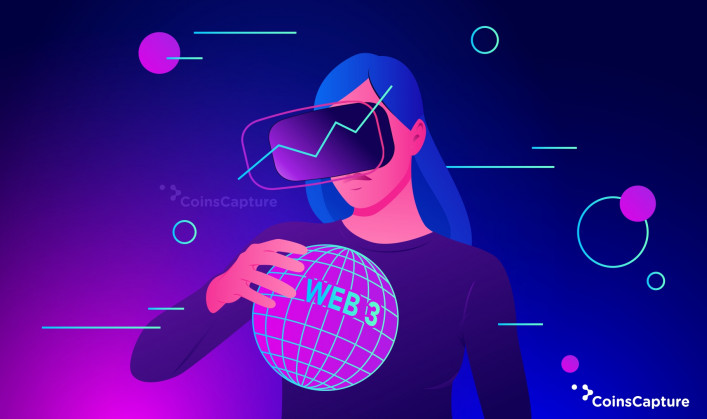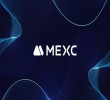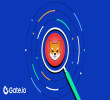7 November 2025
How Do Web3 and the Metaverse Fit Together?
Recently, there has been a meteoric rise in curiosity around Web3 Metaverse. Users are flocking to NFT platforms as NFTs gain popularity and bring together previously disparate populations. In addition, individuals are beginning to recognize the benefits of engaging in the Web3 Metaverse, with NFT art and games serving as an on-ramp. This whole Web3 Metaverse frenzy was sparked by NFTs. Additionally, the introduction of smart contracts as well as token standards like ERC-71 and ERC-1155 allowed for the online sale and transfer of original works of digital art. As a result, a novel approach to the commercialization of virtual content emerged.
Also Read: The Impact Of The Metaverse On Financial Services
Tokenization makes users co-owners of platforms, ushering in the future of the internet known as "Web3." The opposite is true of Web2, an internet age in which people share material but do not share ownership. As a shared digital area, the Metaverse necessitates decentralized networks like Web3 to ensure that all users feel like they have equal authority.
Also Read: Metaverse Healthcare's Amazing Possibilities
Joining the Web3 Metaverse
The Web3 Metaverse is an engaging community that may be entered in a variety of ways. P2E gamers, artists, athletes, and celebrities all have the option of selling their NFT creations on a platform. You may also just be a businessperson trying to find the next great thing. In fact, there are several entry points for programmers interested in contributing to Web3's Metaverse. Create amazing Metaverse applications whether you're a Unity game designer or a blockchain developer working with Ethereum, Binance Smart Chain, Polygon, or any of the other prominent blockchains. It's a complex ecology with many players and several goals. The incentives it offers are reasonable, though, which is why so many producers, admirers, and followers flock to it. In addition, the Web3 Metaverse is now in tune with contemporary society since it has been the focus of innumerable Internet memes.
How are Web3 and Metaverse Changing the Gaming Industry?
When compared to Web2, the current edition of the internet, Web3 has expanded gaming's potential in ways we could never have anticipated. This has made possible the creation of "P2E" games, in which gamers may acquire coins that have worth as well as practicality outside of the game. In contrast, a gamer on a game such as Alien Worlds may gain virtual goods with actual monetary worth, but a Mario Kart player will have nothing to show for 10 years of play. As a result, groups are inspired to provide original material, innovative tools, and exciting gatherings so that they may strengthen their place in the metaverse. Participants in the Web3 system also share equal ownership of the systems in which they participate. Players are more likely to help advance the game and its metaverse by starting companies there after receiving compensation for their efforts.
What is the Web3 Metaverse?
The phrases "Web3" as well as "Metaverse" are sometimes used interchangeably. To some, it may seem as if the two are interchangeable in meaning. Furthermore, every term needs its own definition in order to completely grasp its history and significance. What would be more, "Web3 metaverse" is already such a broad term that it begs to be dissected. This will help anyone interested in blockchain technology, including programmers, players, consumers, as well as Cryptocurrency fans.
Trends Shaping the Web3 Space
NFTS have undeniably influenced the current state of affairs in the Web3 gaming scene. When it comes to blockchain-based video games, the novelty of NFTs lies in the fact that they may be used for more than just collecting or displaying artworks. In reality, we based a lot of Alien Worlds off on this idea. Instruments, ammunition, relics, and much more are up for grabs in our game, and gamers may go to war over them. It's not enough to imagine the NFTs underlying them; they really materialize. DAOs are what we anticipate will be the next big thing. Decentralized Autonomous Organization (DAO) is an organization in which all of the individuals involved in running it such as members of an organization, workers in a firm and many more have equal say in making decisions. This group has the last say on major issues affecting the organization, such as budget allocation. The use of games to explain DAOs to the general public is a fantastic idea.
Advantages of Web3 Over Web2
There are many in the blockchain as well as the wider financial technology community that divide the development of the internet into 3 distinct eras: Web1, Web2, as well as Web3. The first iteration of the Internet is often referred to as "Web1." Web2 describes the current era of user-generated content and platform management. In addition, social media discussions often refer to Web2 as an outdated platform in need of updating. The new standard set by Web3 is to acquire as few personal data as possible. Additionally, it lessens reliance on any one organization or person to maintain a platform's functionality. Web3's goal is to make it harder for a single actor to do widespread damage to a network or exert undue influence over a system. The likelihood of a single organization dominating an ecosystem is diminished by Web3's decentralized nature, whether we're talking about ownership, platform governance, or information access. Accordingly, it's not hard to see why the cause has attracted so many people.
Disclaimer: The author’s thoughts and comments are solely for educational reasons and informative purposes only. They do not represent financial, investment, or other advice.






